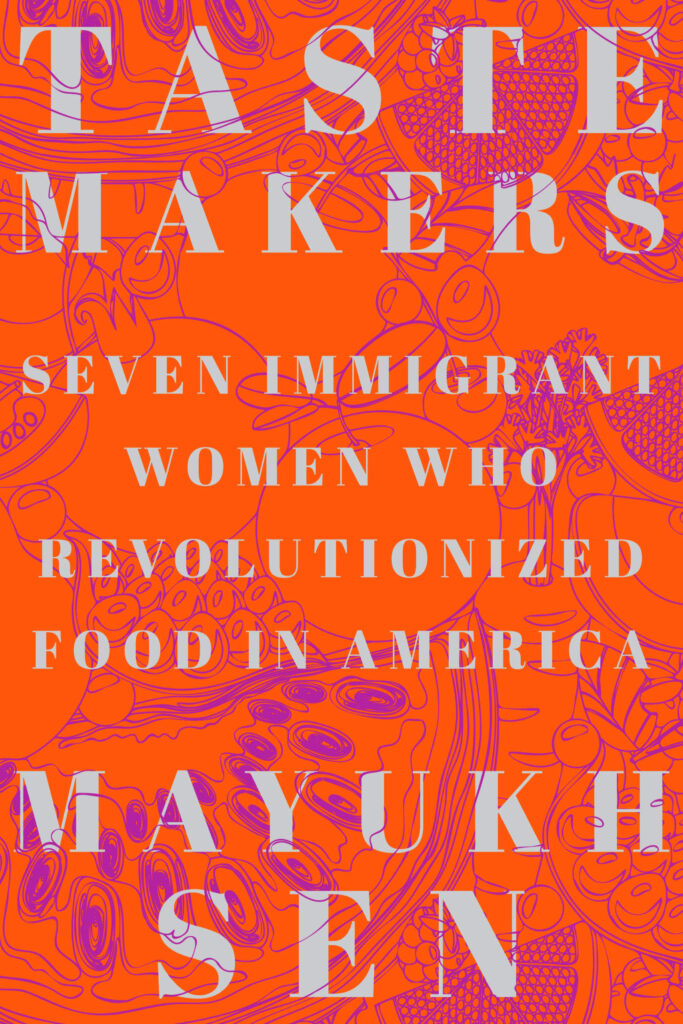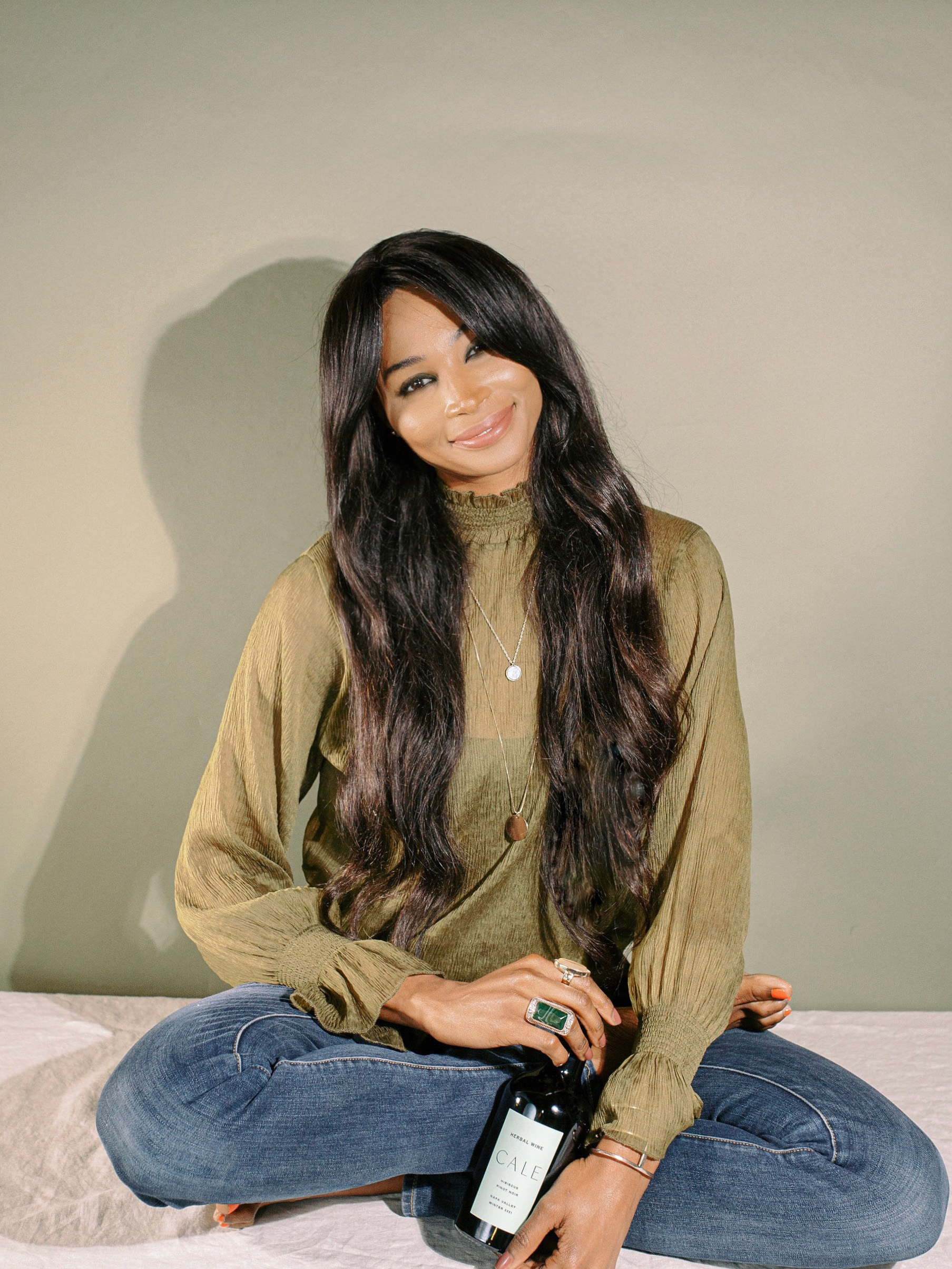When it comes to his own kitchen, food writer Mayukh Sen, like many, is shy. “I’m a timid cook,” he tells Sweet July. The same can’t be said though about his ardent approach to food writing. His profiles, like the James Beard award-winning profile on soul food sensation Princess Pamela, tend to spotlight the culinary figures who aren’t being talked about, let alone praised for their contributions.
Sen’s new book, Taste Makers: Seven Immigrant Women Who Revolutionized Food in America, which is out on November 16, is an extension of this mission. Sen profiles seven women—“seven immigrants who used food to construct an identity outside their home country,” as he describes them—and explores why the stories of these women and their achievements in the American culinary world have largely fallen under the radar and what this says about the industry’s marginalization.

Sen spoke to Sweet July about the process of finding the people he writes about, how his own identity and culture influences his writing, and what he wants readers to understand about the culinary world through his work.
What inspired your decision to write about forgotten and marginalized figures in the food world?
Mayukh Sen: It has a lot to do with who I am in this world, and how I got into food media. I’m a queer person of color. I’m the child of two immigrants from the Indian state of West Bengal. Growing up, I never thought that food writing was a viable career path. I always saw it as the domain of white straight men—the ones who went to fancy restaurants in New York that I would never get into. And so as a result, I always thought that food writing just as a career was not an option for me.
When I eventually got [my first job in food media], I was the only person of color on an editorial staff, composed entirely of white women. And I loved them all dearly, but I definitely felt out of place in my immediate work environment. And that also held true within the larger food writing industry: I didn’t really see perspectives like my own out there, at least in mainstream food media. To make better sense of why I was doing this with my life and to feel a little less alone, I started to really look for stories of figures who are not typically honored by the white American food establishment in the same way that, you know, people like Julia Child or James Beard have been. Through telling their stories, I really got to gain the kind of culinary education that I didn’t have coming into this industry, but it also helped me feel less alone, because these are stories of people who also came into an industry that wasn’t necessarily designed to have room for them, yet they were able to create works of such power and force that they got important people to listen to them. And that is a path that I aspire towards.
How do you find these stories?
MS: When I started telling these stories early in my career, I looked for the names of figures who were kind of mentioned offhand in the stories of much more well-known people. For example, I would read a story about the legendary cookbook editor, Judith Jones, who edited Julia Child and Marcella Hazan, and I would find the name of one author in there whose name I’ve never heard. And then I would look her up and ask myself, ‘Why doesn’t she have a Wikipedia page? Why is there so little information out there about her?’ She clearly meant something in the time that she was living and creating for Americans; maybe there’s a story to tell there.
Another route that I went down was to look at figures who are quite well known and ask myself, ‘Is there a side to them that hasn’t been sufficiently explored?’ For example, [with] the legendary Edna Lewis, who many food writers have written about because she was an incredible woman, something that’s kind of been buried in some stories about her is the fact that, I believe, in the 1940s, she was a communist, and she had very far-left politics. And I wondered ‘Why is it that there’s so little information out there about that period in her life and her politics?’ Another example of this is Dr. Maya Angelou—her body of work is extraordinary, she’s incredibly prolific. She also wrote two cookbooks. And I wondered why there’s so little attention paid to the fact that she wrote these two dazzling pieces of food writing. I wondered if there was a way to bring those books into conversation with her larger body of work, which gets so much attention.
Can you talk about how you found the seven women for your new book?
MS: I wrote the proposal for this book over the course of a few months in 2018. The way that I found some of those subjects I put in my book proposal, [many of whom] were not the same ones I ended up writing about, is I literally searched two terms: I searched “the Julia Child of” and “Craig Claiborne called her.” That’s how I found certain figures like Norma Shirley, for example. Norma Shirley was famously called the Julia Child of Jamaica, or the Julia Child of the Caribbean. And I became incredibly invested in telling her story with as much truth as possible when writing the book. But when I got started with the writing process, once I sold the proposal, it kind of morphed into a different beast because then I realized that some of these women I had initially chosen to write about, they don’t quite have enough memoirs or interviews or any other sources that presented them speaking in their own voice. I felt as though it was important to get each woman speaking in her own voice. So then I had to go back to the drawing board. I looked for women who had memoirs, or cookbooks, or many, many interviews that allowed me to understand their voice. That was definitely a challenge. But as I was getting closer to the finish line, and figuring out which seven women’s stories I wanted to tell, I asked myself, ‘Okay, well, what’s the largest statement that I want to make with this book? Because it’s very easy for this book to feel like a series of disconnected portraits or profiles of these women, but you want to make sure, Mayukh, that you are telling a larger story through grouping these seven women together.’ And so, I looked at stories of women who really have something powerful to say about what it means to stay true to your creative vision, especially in food, whether it’s through cooking or writing about food, or running a restaurant, while also trying to survive and make a living in America. That was kind of the last layer.
Most of these women had cookbooks, but you chose not to include any of the original recipes in your book. Why?
MS: For me, in the whole food writing equation, the writing comes before the food, and I strongly feel as though this genre of food writing does not need the service element all the time for it to have any sort of worth. So I wanted to make sure that these stories could stand on their own as much as possible, which is why I decided not to put any recipes in the book itself. And with this book, I really do hope that readers will feel encouraged to seek out the cookbooks of each of these women (the six of them who did write cookbooks). A lot of these cookbooks are sadly out of print, and I hope that I will nudge readers in a direction where they will seek out these books and demand will increase enough for these books to be back in print.
What do you want people to learn, or understand, from reading your book?
MS: From my vantage point in food media for the past few years, it seems as though it’s very popular for many people, especially people in power, to view America as this wonderful, diverse melting pot of different cuisines. And I’m sure that many readers will pick up a book, wondering how it is that America, or at least certain cities in America, are places where you can get paneer on one block and then you can get enchiladas on the next. How did it become this melting pot? And I want to complicate that narrative as much as possible, because I’ve often found that, at least in mainstream news media, that sort of talking point is so consumer-focused and, more often than not, centers a white middle- to upper-middle-class consumer and it dissenters the people who are actually making the food—those who labor to make that reality possible for many consumers. I wanted to tell the stories of these immigrants and really honor their labor with as much care as possible. I do hope that readers understand that for America to become this glorious, so-called melting pot of diverse cuisine, there’s a lot of struggle involved. You can see a lot of that struggle in the stories of each of these women.
It’s also very popular in food media to work towards assimilation and work according to this impulse or desire to get the approval of the white food establishment. I think that each of these women had different aims as well. Some of them did want to create for the approval of this white food establishment. Others had no desire to do so—they wanted to cook and create for their own people. For example, Najmieh Batmanglij from Iran and Norma Shirley from Jamaica (who I mentioned before) are both examples of women who really began creating for their own communities. I want readers to understand that assimilation is not necessarily the only path towards success, at least in the American culinary world.
This interview has been edited and condensed for clarity.







